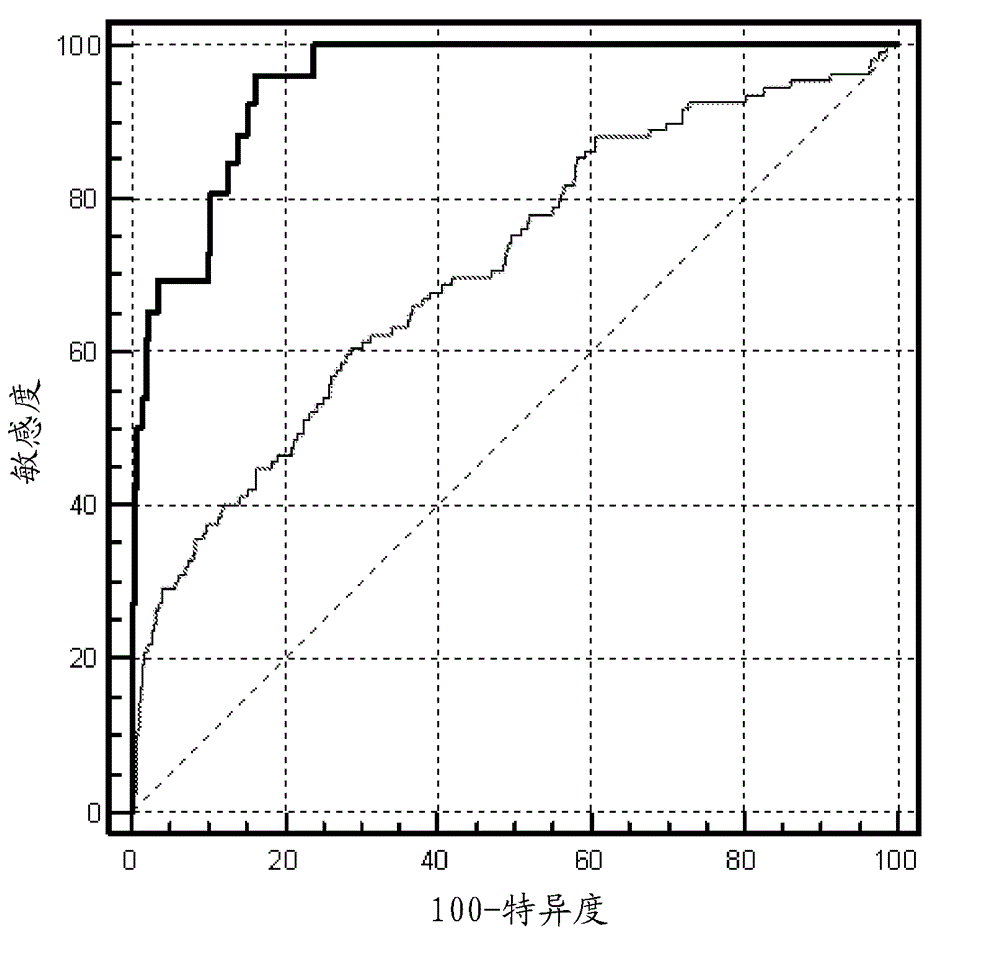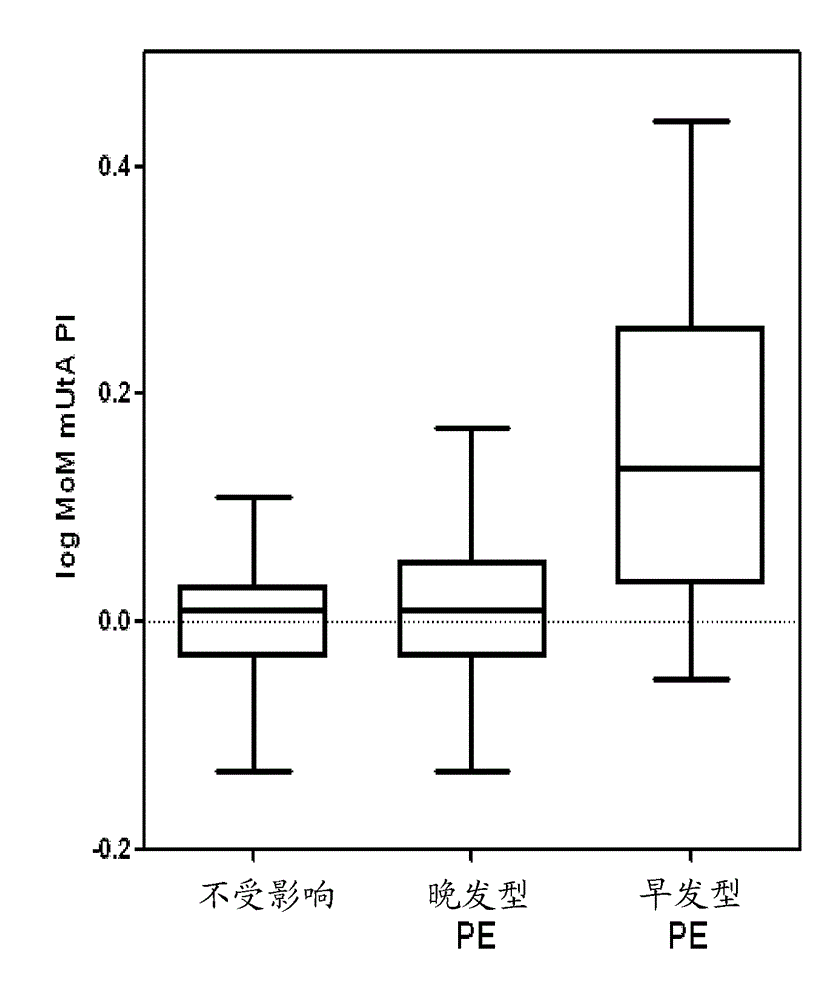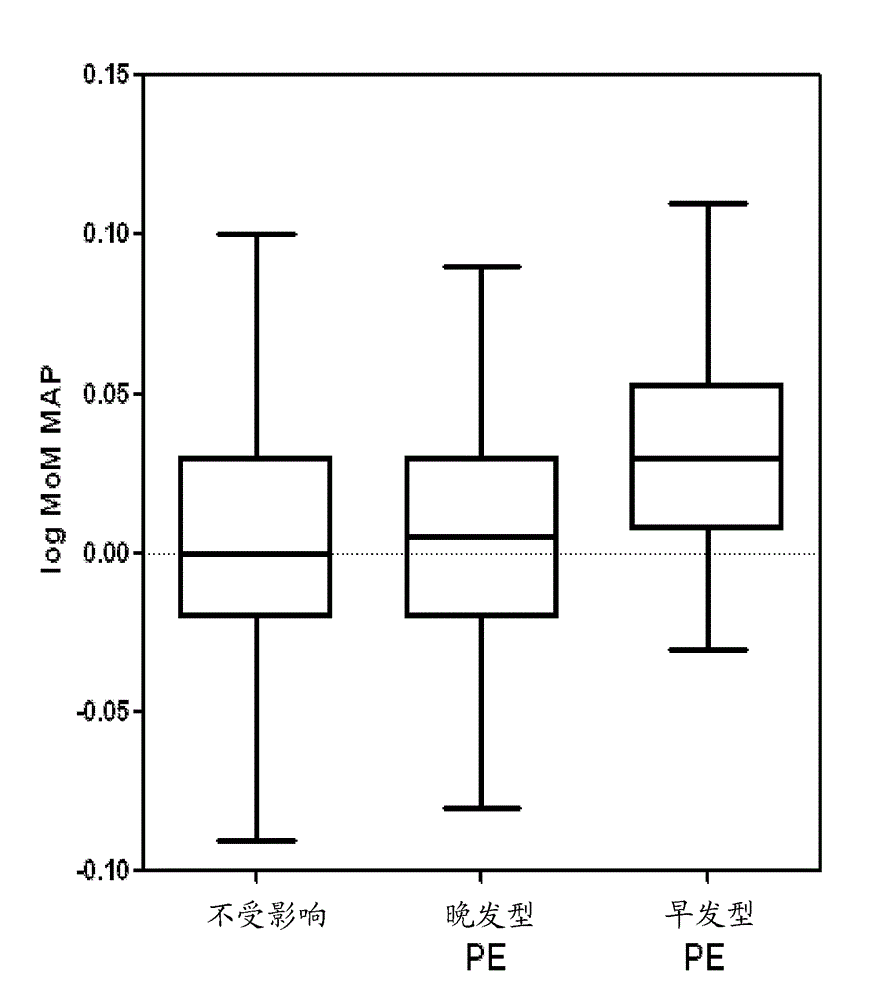Pre-eclampsia screening methods
A technology for pre-eclampsia and eclampsia, applied in the field of pre-eclampsia screening method, can solve problems such as the degree of onset of the disease
- Summary
- Abstract
- Description
- Claims
- Application Information
AI Technical Summary
Problems solved by technology
Method used
Image
Examples
Embodiment 1
[0075] The following studies were performed to develop a logistic regression based predictive model for early-onset and late-onset preeclampsia.
[0076] Methods and Patients
[0077] A prospective cohort of singleton pregnancies underwent routine first-trimester screening at the Department of Maternal-Fetal Medicine of the Hospital Clinic Barcelona. The local ethics committee approved the study protocol and each patient provided written informed consent. Gestational age was calculated in all pregnancies based on crest-rump length (CRL) measured on first-trimester ultrasound. Maternal characteristics and medical history were recorded and blood pressure, UtA, and plasma concentrations of PAPP-A and fβ-HCG were measured in the first trimester.
[0078] Between May 2007 and October 2009, a total of 5,759 women were examined. Among these participants, a total of 589 (10.2%) were excluded for the following reasons (non-exclusively): missing outcome data (n=525), severe fetal d...
Embodiment 2
[0112]Patient-specific data were fitted to the model described in Example 1. The model was applied to a 35 year old woman undergoing her first pregnancy with a prothrombin gene mutation but no other conditions. At the time of first trimester ultrasound (CRL: 65 mm), the patient was 165 cm tall and weighed 65 kg (BMI 23.8 kg / m 2 ). The patient had a mean UtA-PI of 1.85, a MAP of 90 mmHg, and a PAPPA-P of 0.87 MoM. The following results are based on data obtained from this patient. the
[0113] The expected log average UtA-PI is: 0.668018 - (0.002772 * 65) - (0.001536 * 165) - (0.001151 * 35) = 0.194
[0114] The log MoM average UtA PI is: log(1.85) - 0.194 = 0.073
[0115] The expected log MAP is: 1.803485 + (0.00299 * 23.8) + (0.000645 * 35) = 1.897
[0116] The log MoM MAP is: log(90) - 1.897 = 0.057
[0117] The prior probability of early-onset PE is: Y = -5.617
[0118] a priori risk = e -5.617 / (1+e -5.617 ) = 0.0036
[0119] The posterior probability of early...
PUM
 Login to View More
Login to View More Abstract
Description
Claims
Application Information
 Login to View More
Login to View More - R&D
- Intellectual Property
- Life Sciences
- Materials
- Tech Scout
- Unparalleled Data Quality
- Higher Quality Content
- 60% Fewer Hallucinations
Browse by: Latest US Patents, China's latest patents, Technical Efficacy Thesaurus, Application Domain, Technology Topic, Popular Technical Reports.
© 2025 PatSnap. All rights reserved.Legal|Privacy policy|Modern Slavery Act Transparency Statement|Sitemap|About US| Contact US: help@patsnap.com



